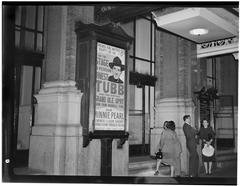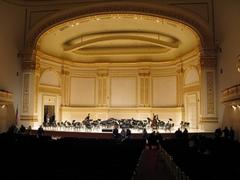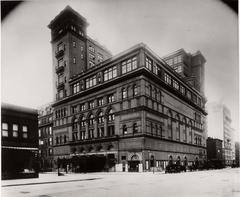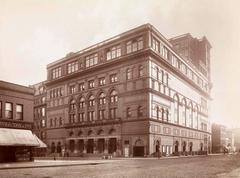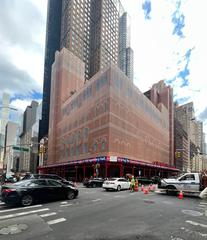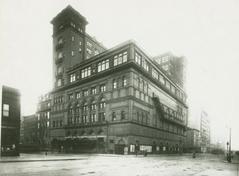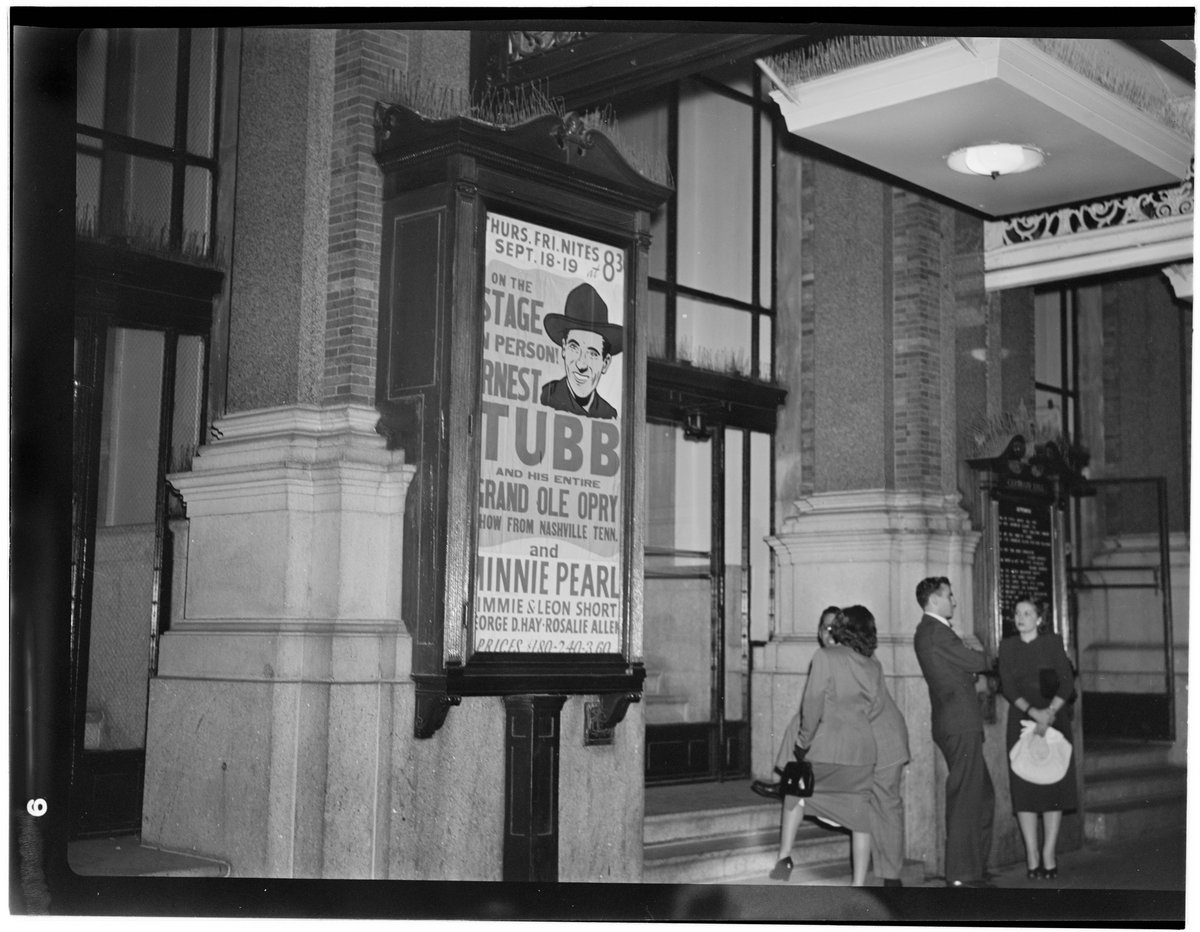
Carnegie Hall Visiting Hours, Tickets, and New York City Historical Sites Guide
Date: 14/06/2025
Introduction
Carnegie Hall, an architectural and cultural jewel in Midtown Manhattan, stands among the world’s most revered concert venues. Since its opening in 1891, it has been synonymous with musical excellence, historic milestones, and architectural grandeur. Founded by philanthropist Andrew Carnegie, the Hall remains an enduring symbol of New York City’s vibrant arts scene, hosting legendary performances and fostering musical innovation for over a century (Take Walks; Classic New York History).
This comprehensive guide provides essential information on Carnegie Hall’s visiting hours, ticketing options, accessibility features, and travel tips. It also explores the Hall’s rich history, architectural highlights, and its vital role in New York City’s cultural landscape.
Table of Contents
- Introduction
- History and Founding Vision
- Architectural Marvels and Acoustic Excellence
- Preservation and Modernization
- Visitor Information: Hours, Tickets, and Accessibility
- Getting There and Nearby Attractions
- Notable Performances and Cultural Impact
- Educational Mission and Community Engagement
- Practical Tips for Visitors
- Frequently Asked Questions (FAQs)
- Conclusion and Recommendations
- References
History and Founding Vision
Carnegie Hall was conceived in the late nineteenth century during New York City’s rapid transformation into a cultural powerhouse. Andrew Carnegie, inspired by his wife Louise’s involvement with the Oratorio Society of New York, envisioned a world-class concert venue that would elevate the city’s artistic profile (Art Facts). The cornerstone was laid in 1890 at the intersection of 57th Street and Seventh Avenue, then an undeveloped area just south of Central Park.
Carnegie’s vision was prophetic: he stated at the cornerstone ceremony, “It is probable that this Hall will intertwine itself with the history of our country” (Take Walks). The Hall opened its doors on May 5, 1891, with a concert conducted by Pyotr Ilyich Tchaikovsky (Classic New York History), marking the beginning of its storied legacy.
Architectural Marvels and Acoustic Excellence
Design and Construction
William Burnet Tuthill, though relatively inexperienced with concert halls, created a masterpiece inspired by Neo-Italian Renaissance architecture. The Hall’s buff-colored brick façade, terra cotta ornamentation, and arched windows evoke elegance and timelessness (EAA Architecture; Wikipedia). Inside, the ornate lobbies and staircases set a stately tone for every event (freetoursbyfoot.com).
Carnegie Hall comprises three main performance spaces:
- Stern Auditorium/Perelman Stage: The largest, seating 2,804, renowned for its horseshoe shape and high vaulted ceiling.
- Zankel Hall: An intimate, flexible venue for 599 guests.
- Weill Recital Hall: A 268-seat space ideal for chamber music and solo performances (Wikipedia).
Acoustic Innovation
The Hall’s design prioritizes acoustics. Tuthill’s use of hard plaster surfaces, minimal drapery, and calculated dimensions creates a warm, clear, and immersive sound—qualities that have become legendary among musicians and audiences alike (Acentech).
Preservation and Modernization
Carnegie Hall faced demolition threats in the 1960s after the New York Philharmonic relocated to Lincoln Center. Thanks to a campaign led by violinist Isaac Stern and other cultural figures, the City of New York purchased the Hall in 1960, ensuring its survival (Loving New York). It was designated a National Historic Landmark in 1962 and received further protection in 1964 (EAA Architecture).
Major renovations in the 1980s and the addition of the Studio Towers and Resnick Education Wing in the 2010s have modernized the facility while meticulously preserving its historic features (Wikipedia).
Visitor Information: Hours, Tickets, and Accessibility
Visiting Hours
- Box Office: Monday–Saturday, 11:00 a.m.–6:00 p.m.; Sunday, 12:00 p.m.–6:00 p.m. Extended hours on performance days. (Carnegie Hall Official)
- Guided Tours: Available most non-performance days; check the official website for the latest schedules.
Tickets
- Purchase through the official website, box office, or authorized partners.
- Prices vary by event and seat location; discounts may be available for students, seniors, and groups.
- Early booking is encouraged for high-demand events (New York Concert Hall).
Accessibility
Carnegie Hall is fully accessible, offering:
- Wheelchair-accessible entrances and seating
- Elevators to all public levels
- Accessible restrooms
- Assistive listening devices
- Service animal accommodation
For special accommodations, contact the box office in advance.
Getting There and Nearby Attractions
- Address: 881 Seventh Avenue, between 56th and 57th Streets, Midtown Manhattan.
- Subway: 57th Street–Seventh Avenue (N, Q, R, W lines) and 59th Street–Columbus Circle (A, B, C, D, 1 lines).
- Bus: M5, M7, M10, M20, and M104 routes.
- Parking: No on-site parking; use nearby paid garages with advance reservations.
Nearby Attractions
- Central Park: Just two blocks north.
- Museum of Modern Art (MoMA)
- Times Square
- Rockefeller Center
- Fifth Avenue shopping (City Beautiful Blog)
Notable Performances and Cultural Impact
Carnegie Hall has hosted over 50,000 events, featuring artists such as Tchaikovsky, Leonard Bernstein, Billie Holiday, The Beatles, and more (Flatiron Nomad; CTS Central). Premieres of works by Dvořák, Gershwin, Bernstein, and others have shaped music history.
The Hall’s diverse programming includes classical, jazz, pop, world music, and oratorical events, reflecting New York’s multicultural spirit.
Educational Mission and Community Engagement
The Weill Music Institute and the Judith and Burton Resnick Education Wing offer workshops, masterclasses, and outreach programs, reaching over half a million people annually (Facts.net). The Rose Museum preserves the Hall’s legacy through historical artifacts and exhibits (Hello New York).
Carnegie Hall Citywide extends free performances throughout the five boroughs, democratizing access to world-class music (Metrosource).
Practical Tips for Visitors
- Book Early: Popular events sell out fast.
- Arrive Early: Allow time for ticket collection and security.
- Dress Code: Business casual is standard, but comfort is key (The Globetrotting Teacher).
- Amenities: Restrooms, coat check (seasonal), concessions available.
- Etiquette: Silence devices, no photos during events, and follow staff instructions.
Frequently Asked Questions (FAQs)
What are Carnegie Hall’s visiting hours?
Box office: Monday–Saturday, 11:00 a.m.–6:00 p.m.; Sunday, 12:00 p.m.–6:00 p.m. Guided tours have separate schedules—check the website for updates.
How can I buy tickets?
Online via the official website, by phone, or at the box office.
Is Carnegie Hall wheelchair accessible?
Yes, with elevators, accessible seating, and assistive listening devices.
Are guided tours available?
Yes, on most non-performance days. Advance booking is recommended.
What attractions are nearby?
Central Park, MoMA, Times Square, and Rockefeller Center.
Can I bring food or drinks into the performance halls?
No; food and drinks are not permitted inside the halls.
Conclusion and Recommendations
Carnegie Hall stands as a testament to New York City’s cultural vitality and its commitment to artistic excellence. The Hall’s magnificent acoustics, storied history, and ongoing educational outreach make it a must-visit destination for music lovers, architecture enthusiasts, and curious travelers alike. Whether attending a world-class concert, exploring its ornate halls on a guided tour, or engaging with its robust educational programs, every visit promises inspiration and discovery (Classic New York History; EAA Architecture; Acentech).
To make the most of your experience:
- Plan ahead with up-to-date information on visiting hours, tickets, and accessibility.
- Download the Audiala app for exclusive guides, ticket alerts, and personalized recommendations.
Explore New York City’s rich cultural tapestry by including Carnegie Hall and its neighboring landmarks in your itinerary.
References
- Carnegie Hall Visitors Guide (Take Walks)
- History of New York’s Carnegie Hall (Classic New York History)
- Carnegie Hall Facts (Art Facts)
- Architecture Behind Carnegie Hall, New York, NY (EAA Architecture)
- Carnegie Hall (Hello New York)
- 12 Astounding Facts About Carnegie Hall (Facts.net)
- Carnegie Hall - Wikipedia
- How an Acoustician Got to Carnegie Hall (Acentech)
- Carnegie Hall Story of the Iconic Venue (City Beautiful Blog)
- Audiala App (Audiala)
- Carnegie Hall Citywide 2025 Summer Concert Series (Metrosource)
- Classical Performances: The History of Carnegie Hall (CTS Central)
- Discover Carnegie Hall: A Cultural Icon Shaped by Philanthropy & Vision (Flatiron Nomad)
- Carnegie Hall Events (New York Concert Hall)
- Carnegie Hall Tours (freetoursbyfoot.com)
- 11 Guaranteed Dos and Don’ts for Visiting NYC Like a Pro (The Globetrotting Teacher)
